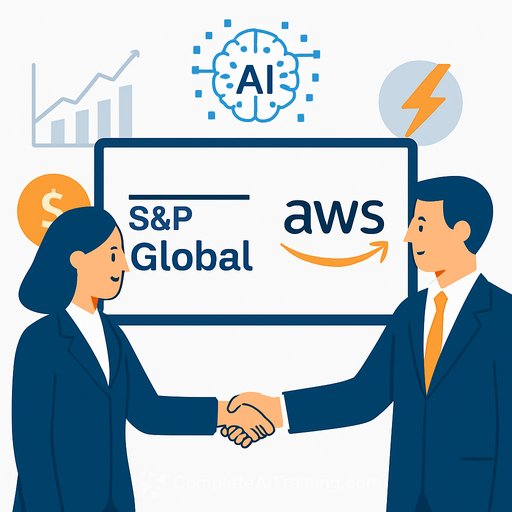7 Applications of Generative AI in Corporate Finance
Generative AI is ready to partner with your finance team. It turns scattered data into clean narratives, speeds routine work, and gives you tighter control over decisions. The goal is simple: reduce cycle times, improve accuracy, and keep focus on value creation.
1) Month-End Close Co-Pilot
Use AI to flag anomalies, draft journal entry justifications, and generate flux commentary from the trial balance. Think of it as an extra set of eyes that never gets tired.
- Automates tie-outs, proposes recurring entries with source citations, and highlights policy exceptions.
- Impact: Cut close time by 20-40%, fewer post-close adjustments, cleaner audit trails.
- Guardrails: Read-only access to the ERP, human approval for postings, and prompt-logging for auditability.
2) Automated Management Reporting and Commentary
Generate board-ready packs with variance analysis, KPIs, and plain-English commentary. The system pulls facts; you apply judgment.
- Drafts MD&A sections, waterfall explanations, and segment insights using your templates.
- Impact: Hours saved per deck, consistent tone across business units, faster executive alignment.
- Start: Lock a style guide, define approved metrics, and set redlines for sensitive statements.
3) Forecasting and Scenario Simulation
Pair time-series models with a conversational layer to test assumptions in seconds. Ask for scenarios and get versioned outputs with sources and rationale.
- "What happens if price drops 5%, churn rises 2 pts, and CAC improves by 10%?" Get P&L, cash, and covenants impact.
- Impact: Shorter forecast cycles, improved MAPE, tighter working capital planning.
- Controls: Assumption libraries, change logs, and approval windows before distribution.
4) Cash Flow and Working Capital Optimization
AI can prioritize collections, draft customer-friendly dunning emails, and suggest payment term adjustments. It can also annotate inventory actions by SKU and location.
- Personalizes AR outreach, flags at-risk invoices, and sequences next best action.
- Impact: DSO down 5-10 days, more predictable cash in, fewer write-offs.
- Compliance: Pre-approved templates, opt-out logic, and fair-language checks.
5) Procurement Spend Intelligence
Classify spend automatically, spot maverick buying, and surface savings levers. Generate first-draft RFP and contract clauses aligned to policy.
- Normalizes supplier names, clusters categories, and recommends consolidation opportunities.
- Impact: 3-7% addressable savings, better contract coverage, less leakage.
- Safeguards: Human review before supplier outreach and policy rulebooks embedded in prompts.
6) Policy, Controls, and Compliance Assistant
Provide a chat interface over accounting policies, SOX narratives, and control matrices. Teams get consistent answers with citations back to your documents.
- Speeds PBC requests, control walkthroughs, and accounting memos with reference links.
- Impact: Fewer escalations, faster audits, stronger documentation quality.
- Governance: Use an internal knowledge base, monitor responses, and apply an AI risk framework such as the NIST AI RMF.
7) Investor and Stakeholder Communications
Draft earnings scripts, Q&A prep, and FAQ pages from approved data. Built-in tone and compliance checks reduce rework.
- Aligns language to guidance, flags forward-looking statements, and standardizes fact sheets.
- Impact: Faster prep cycles, fewer last-minute edits, consistent message across channels.
- Controls: Legal review by default and hard rules for Reg FD and disclosure policies.
Implementation Playbook
You don't need a massive rebuild to get value. Start small, constrain scope, and measure the win.
- Select 1-2 high-volume, rules-heavy processes (close narratives, AR outreach, flux analysis).
- Connect to systems in read-only mode. Use retrieval over your ERP, data warehouse, and policy docs for grounded responses.
- Define acceptance criteria: accuracy thresholds, turnaround times, and review steps.
- Track KPIs: close days, forecast MAPE, DSO, percentage of auto-generated commentary accepted without edits, audit findings.
- Upskill the team on prompt patterns and verification techniques. A practical starting point: AI tools for finance.
Data, Risk, and Controls
Finance data is sensitive. Treat AI like any vendor touching financial information.
- Data protection: Pseudonymize PII, mask vendor details, and enforce least-privilege access.
- Quality gates: Validate inputs, pin to approved data cuts, and log prompts/responses for audit.
- Bias and tone: Pre-approve templates for customer communications and supplier interactions.
- Model risk: Periodic accuracy tests, red-team reviews, and a documented exception process.
What Good Looks Like in 90 Days
- Close commentary and variance notes generated from a standard template with sourced figures.
- AR outreach running with approved messaging and measurable DSO improvement.
- Scenario packs delivered to leadership within hours, not days, with traceable assumptions.
- Policy assistant answering common questions with links to your control docs.
Final Take
Generative AI won't replace finance judgment. It removes friction so you can apply that judgment where it counts: cash, cost, and risk. Start with one process, prove impact, and scale what works.
- If you want a curated path for your team, explore AI courses by job that map directly to finance workflows.
Your membership also unlocks:






